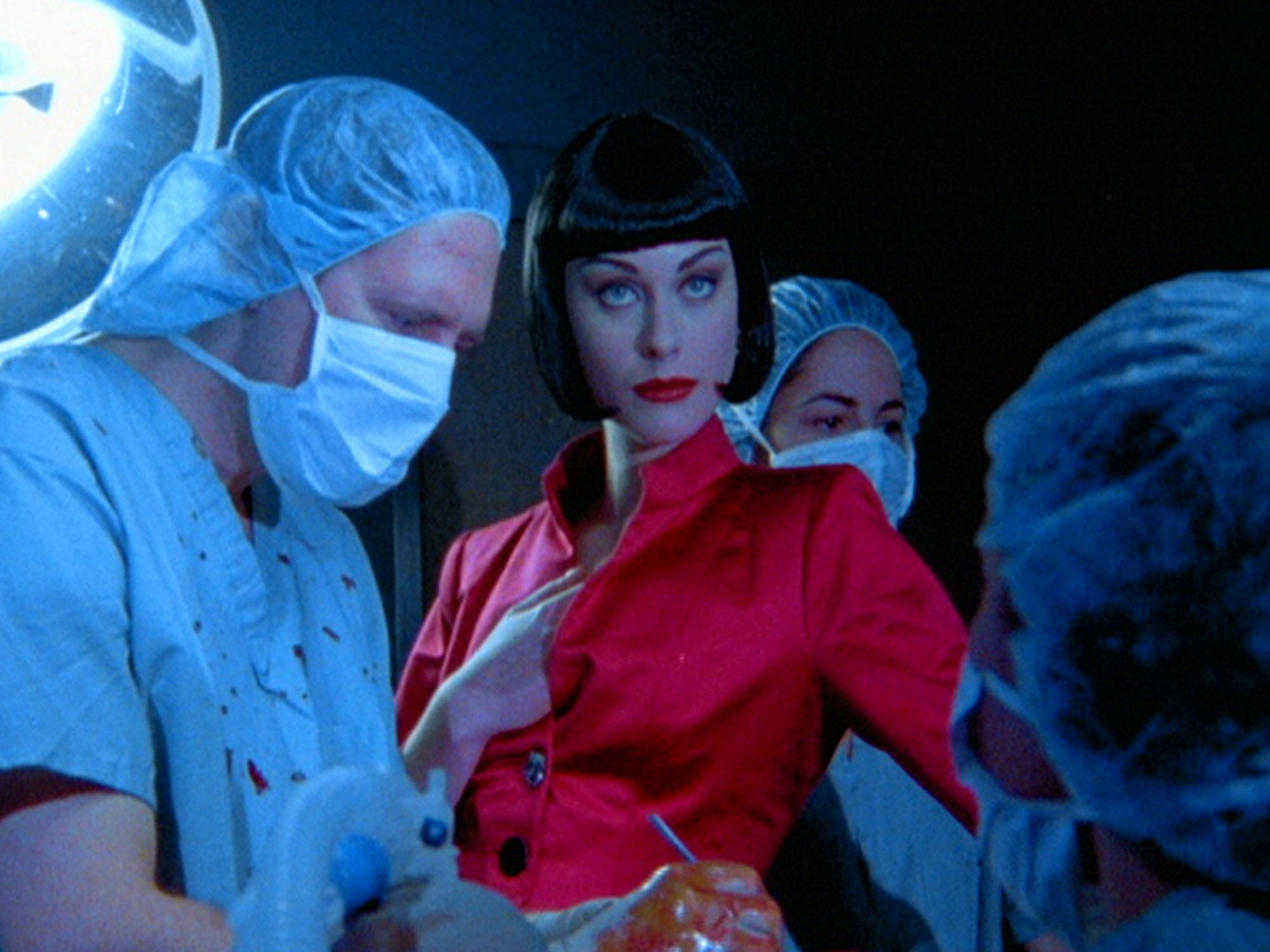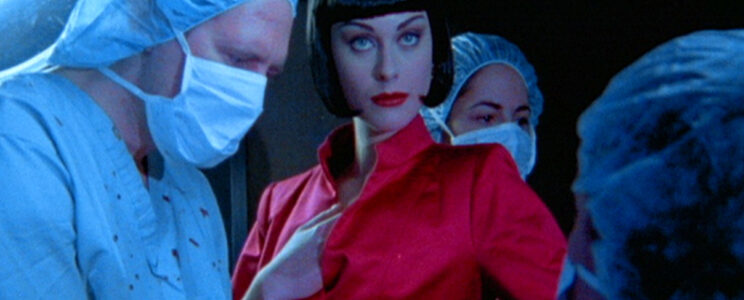In the tumultuous realm of literature, few authors have dared to explore the darkest corners of the human psyche with the audacity and precision of J.G. Ballard. His avant-garde style, marked by its unflinching examination of the modern world’s disintegration, has earned him a place among the most provocative writers of the 20th century. One of his most controversial works, “The Atrocity Exhibition,” serves as a chilling testament to Ballard’s mastery of the grotesque and the sublime.
Introduction to J.G. Ballard: A Maverick of Modern Literature
J.G. Ballard, born James Graham Ballard in 1930, was a British novelist, short story writer, and essayist. His distinctive literary style is characterized by its fusion of science fiction, surrealism, and psychological realism. Ballard’s exploration of the human condition amidst the chaos of contemporary society often delves into themes of alienation, technology, and the fragility of sanity.
Plot: Fragmented Realities and Collapsing Minds
“The Atrocity Exhibition” defies traditional narrative conventions, presenting readers with a fractured mosaic of vignettes, images, and psychological experiments. At its core, the novel follows Dr. Nathan, a psychiatrist obsessed with the perverse intersections of violence, media, and celebrity culture. As Dr. Nathan navigates a surreal landscape populated by car crashes, pop icons, and nuclear paranoia, the boundaries between reality and hallucination blur, leading to a descent into madness.

Key Characters: Pawns in a Distorted Reality
Dr. Nathan
Dr. Nathan serves as the novel’s enigmatic protagonist, whose obsessive quest for meaning amidst chaos drives the narrative forward. His unraveling psyche becomes a mirror reflecting the fractured world Ballard so masterfully constructs.
Traven
Traven, a recurring character in Ballard’s works, appears as a spectral figure haunting Dr. Nathan’s subconscious. His presence symbolizes the elusive nature of truth and the relentless pursuit of understanding in an irrational world.
Catherine Austin
Catherine Austin, a former lover of Dr. Nathan, embodies the allure of fame and the hollow promises of modernity. Her fragmented identity mirrors the disintegration of society’s collective psyche, blurring the lines between self and spectacle.
Key Themes: A Dystopian Vision of Modernity
Media Saturation
Ballard’s exploration of media saturation and its effects on consciousness remains eerily prescient in an age dominated by 24-hour news cycles and social media platforms. The relentless barrage of images and information serves as both a catalyst for and a reflection of societal decay.
Psychological Fragmentation
The novel’s fragmented structure mirrors the fractured psyches of its characters, highlighting the disintegration of identity in a world devoid of meaning. Ballard’s portrayal of psychosis as a response to cultural dissonance challenges conventional notions of sanity and reality.
Technological Alienation
From the fetishization of technology to the dehumanizing effects of mass production, “The Atrocity Exhibition” exposes the alienating influence of modern technology on human relationships and individual autonomy. Ballard’s dystopian vision warns of a future where humanity becomes enslaved by its own creations.
Inspiration and Influences: From Surrealism to Psychopathology
J.G. Ballard’s “The Atrocity Exhibition” emerges from the fertile soil of the author’s own experiences, influences, and obsessions, weaving together strands of surrealism, psychoanalysis, and cultural critique into a tapestry of existential dread. To truly understand the genesis of Ballard’s magnum opus, one must embark on a journey into the recesses of his psyche, where childhood traumas, wartime memories, and artistic influences converge to shape his singular vision.
Childhood in Wartime Shanghai
Born in 1930 in Shanghai, Ballard spent his formative years in the midst of geopolitical upheaval and social disintegration. The Japanese occupation of Shanghai during World War II left an indelible mark on the young Ballard, exposing him to the horrors of war, displacement, and cultural rupture. These early experiences of chaos and uncertainty would later find echoes in the fragmented landscapes of “The Atrocity Exhibition,” where the boundaries between reality and nightmare blur beyond recognition.
Surrealism and the Unconscious Mind
Ballard’s immersion in the works of surrealist artists such as Salvador Dali and Max Ernst exerted a profound influence on his artistic sensibilities, introducing him to the transformative power of the unconscious mind. Surrealism’s fascination with dreams, desires, and the irrational provided Ballard with a framework for exploring the hidden depths of human consciousness, where the rational facade of civilization gives way to primal instincts and forbidden fantasies.
Psychoanalysis and the Language of Desire
As a medical student in the 1950s, Ballard became increasingly intrigued by the burgeoning field of psychoanalysis and its implications for understanding human behavior. The writings of Sigmund Freud and Jacques Lacan offered Ballard a lexicon for deciphering the symbolic language of desire and repression, revealing the dark undercurrents of sexuality, violence, and mortality that lurk beneath the surface of everyday life. In “The Atrocity Exhibition,” Ballard harnesses the tools of psychoanalysis to excavate the buried traumas and forbidden desires that haunt the collective unconscious, laying bare the raw nerves of modernity in all its grotesque glory.
Cultural Critique and the Spectacle of Mass Media
Against the backdrop of the Swinging Sixties and the rise of consumer culture, Ballard became increasingly disillusioned with the hollow promises of progress and prosperity. The omnipresent influence of mass media, with its relentless barrage of images and ideologies, served as a catalyst for Ballard’s critique of modernity’s obsession with spectacle and sensation. In “The Atrocity Exhibition,” Ballard confronts the viewer with a grotesque funhouse mirror reflecting the absurdity and banality of contemporary life, where the boundaries between reality and simulation dissolve in a fever dream of violence and voyeurism.
Personal Trauma and the Quest for Meaning
At its core, “The Atrocity Exhibition” is a deeply personal work for Ballard, reflecting his own struggles with loss, alienation, and existential despair. The death of Ballard’s wife, Mary, from pneumonia in 1964 cast a long shadow over his psyche, plunging him into a profound state of grief and introspection. In the aftermath of this tragedy, Ballard embarked on a quest for meaning amidst the ruins of his shattered world, seeking solace in the cathartic act of artistic creation. “The Atrocity Exhibition” thus emerges as a testament to Ballard’s resilience in the face of adversity, transforming personal trauma into a universal meditation on the fragility of human existence and the elusive nature of truth.
Reviews: Controversy and Critical Acclaim
“The Atrocity Exhibition” initially faced backlash upon its publication in 1970, with critics condemning its graphic depictions of violence and sexual deviance. However, subsequent generations of readers have lauded the novel for its bold experimentation and prophetic insights into the dark underbelly of modernity. Today, it stands as a cult classic, revered for its uncompromising vision and literary innovation.

Similar Works and Authorial Legacy
Ballard’s oeuvre is replete with works that explore similar themes of societal collapse, technological dystopia, and psychological aberration. Novels such as “Crash,” “High-Rise,” and “Empire of the Sun” further cement Ballard’s reputation as a visionary writer unafraid to confront humanity’s deepest fears and desires. His influence can be seen in the works of contemporary artists such as William Gibson, David Cronenberg, and Chuck Palahniuk, who continue to push the boundaries of speculative fiction and psychological horror.
The Atrocity Exhibition
In conclusion, J.G. Ballard’s “The Atrocity Exhibition” stands as a testament to the power of literature to confront the darkest recesses of the human soul. Through its fragmented narrative and surreal imagery, the novel offers a harrowing glimpse into a world on the brink of collapse, where reality and fantasy converge in a terrifying dance of madness. As society hurtles towards an uncertain future, Ballard’s prophetic vision serves as a haunting reminder of the fragility of civilization and the depths of human depravity.


